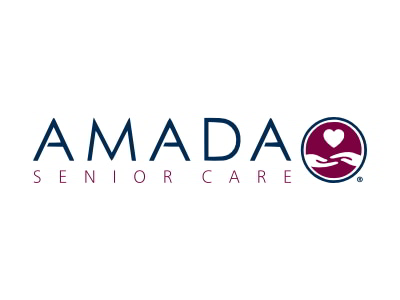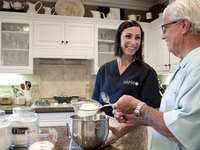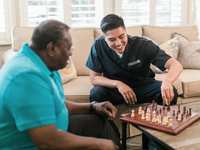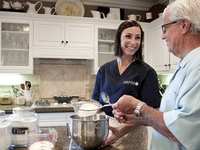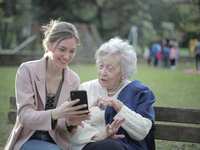- Categories :
- More
The Role of Home Care Following Senior Rehab

National Rehabilitation Awareness Month shines a spotlight on the importance of rehabilitation services and their role in helping seniors recover from a stay at a hospital or rehabilitation center. Studies point to 5.6 million older adults and seniors completing at least one episode of rehabilitation in the U.S. in the past year.
Among older adults and seniors with moderate fall risk, 23% used rehabilitation services in the past year; among those with high fall risk, usage was higher – 40.6% according to a National Institute of Health study.
For seniors, rehabilitation is often a vital step following surgery, illness, or injury. But what happens when formal therapy sessions end and older adults return home? This is where non-medical home care professionals play a critical role, creating a bridge in the senior care continuum by assisting seniors to rebuild their independence and improve their quality of life.
Rehabilitation: A Crucial Step for Seniors in Recovery
Rehabilitation services—such as physical therapy, occupational therapy, and speech therapy—focus on restoring or maintaining a senior’s strength, mobility, and functional independence. For example:
After a fall or hip surgery, physical therapy helps seniors regain balance and walking ability.
After a stroke, occupational therapy teaches strategies for daily living, like dressing or cooking.
Speech therapy can help seniors recover communication and swallowing skills.
These therapies are essential for regaining independence, but they are often limited to set schedules and specific treatment plans. After formal rehab (especially post-discharge), seniors often need ongoing support to maintain or build on progress—but that’s where non-medical home care can help. The reality is that progress doesn’t end when therapy sessions do—it requires consistent support at home.
The Role of Non-Medical Home Care Post-Senior Rehab
Non-medical caregivers complement rehabilitation by supporting seniors in their everyday environment. Their role is not to replace licensed therapists but to reinforce healthy routines, ensure safety, and encourage continued practice of skills learned in therapy.
Here are some ways non-medical caregivers extend the benefits of rehabilitation when a senior returns home:
Daily Assistance: Helping with bathing, dressing, meal preparation, and mobility—tasks that therapy helps seniors regain but may still require support.
Encouragement & Consistency: Reminding seniors to do their exercises, use mobility aids correctly, or follow therapists’ recommendations.
Fall Prevention: Monitoring the home environment, reducing risks, and supporting safe movement around the house.
Transportation Support: Driving seniors to therapy sessions, medical follow-ups, or community programs that promote ongoing recovery.
Emotional Support: Providing companionship, encouragement, and motivation—key elements for seniors who may feel frustrated or isolated during recovery.
The Amada Senior Care Focus of Enriching Lives
The senior care continuum is about creating seamless support at every stage of aging. Rehabilitation professionals, medical providers, and non-medical caregivers are all part of this ecosystem. When these roles work in harmony:
Seniors recover faster and more safely.
Hospital readmissions are reduced.
Families feel supported knowing their loved ones are cared for holistically.
For example, a senior discharged from a rehabilitation center after knee replacement surgery may continue outpatient therapy while receiving help at home with daily activities. A trained caregiver from Amada Senior Care ensures the senior stays active, follows safety guidelines, and avoids re-injury—all critical for a successful long-term recovery.
Supporting Seniors to Regain Independence and Thrive at Home
This National Rehabilitation Awareness Month is an opportunity to recognize not only the expertise of rehabilitation professionals but also the importance of continuity of care. Recovery doesn’t happen in isolation—it happens in living rooms, kitchens, and neighborhoods where seniors spend most of their time. Non-medical home care ensures that rehabilitation goals translate into everyday life, supporting seniors in regaining independence and thriving at home.
Recovery is a journey, not a single event. Rehabilitation professionals provide the tools, and non-medical caregivers help seniors apply them in daily life. Together, they create a powerful partnership that keeps older adults safe, supported, and on the path to greater independence.

